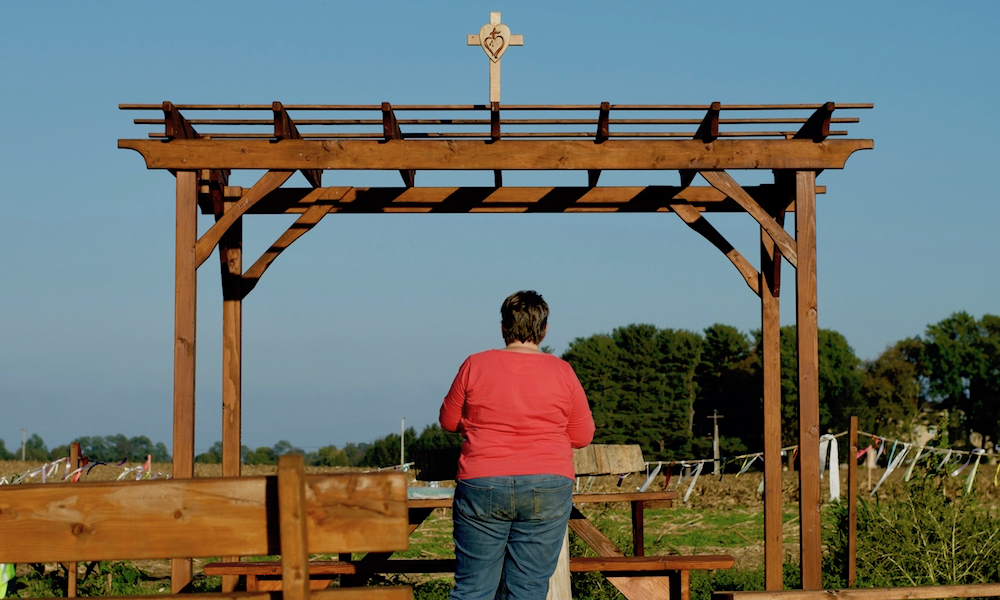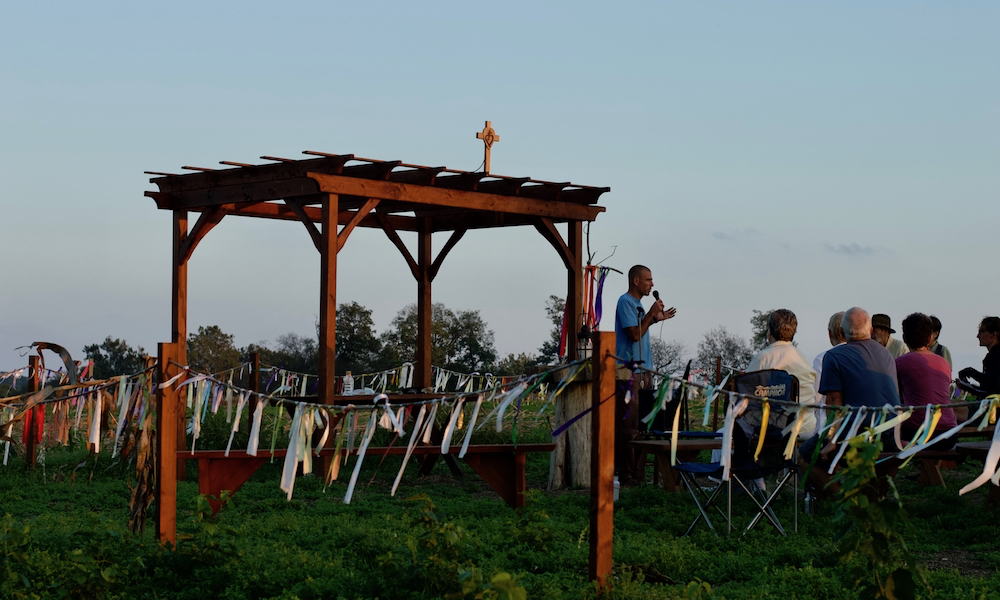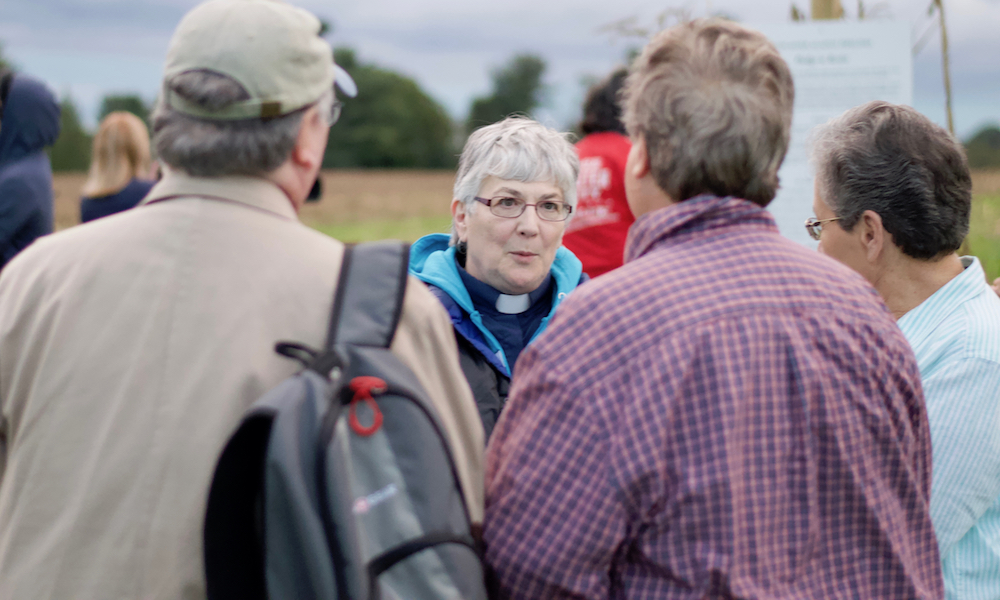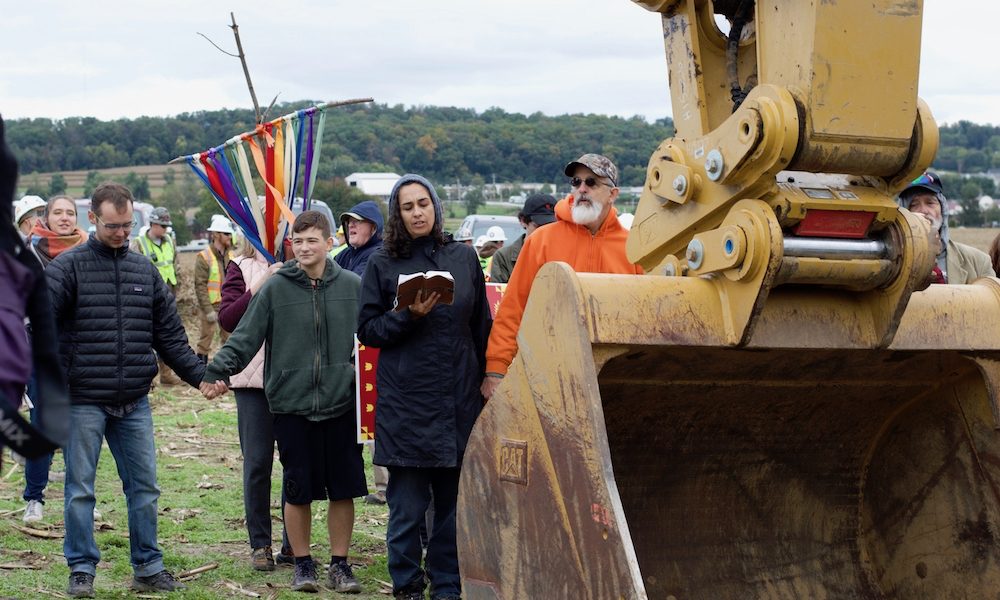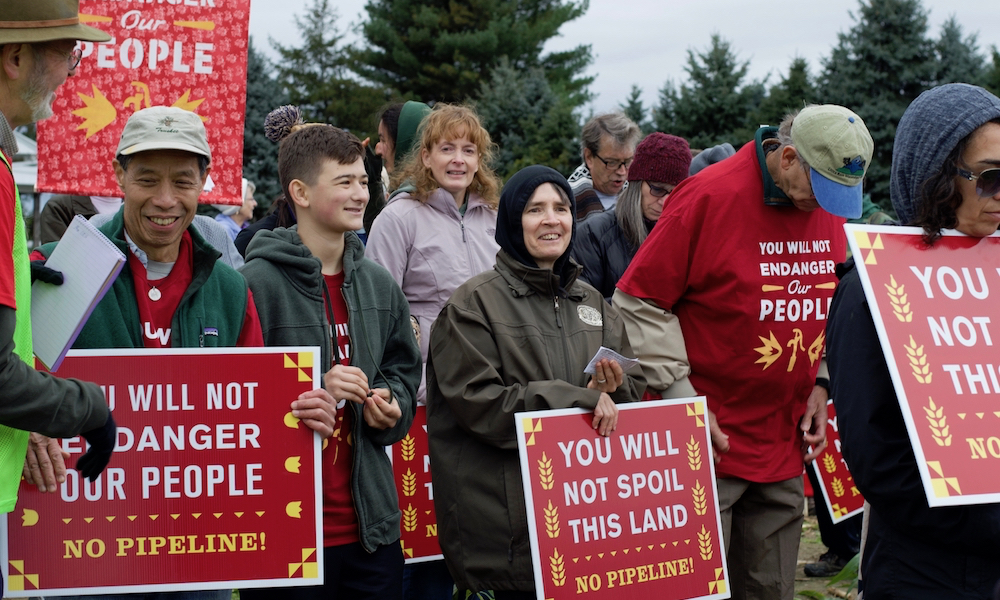In 2005, a group of 205 Catholic nuns gathered in the American city of St. Louis to talk about a subject that worried them: pollution. Most of the order, Sisters of the Adorers of the Blood of Christ, came from the rural United States and had seen, first-hand, the contamination of natural resources by large corporations. They wanted to articulate the relationship between faith and the preservation of the planet, believing that the land, as a source of sustenance and a legacy for future generations, is sacred. The meeting resulted in a document called “Land Ethics,” summarizing the nuns’ views on the subject. Twelve years later, it is the nuns’ own land that is threatened: A billionaire project intends to build a gas pipeline through the Lancaster, Pennsylvania, property of the Adorers, exposing both community and soil to the risks of explosions and contamination. Now, the nuns are fighting in court and on their grounds, where they have, with a group of village residents, built a chapel to defend what they consider sacred.
The Adorers’ property seems far away from the big avenues, residential blocks, and commercial buildings of Lancaster. Surrounded by a park of tall trees and cornfields, the grounds house the convent as well as a nursing home run by the nuns.
The order, founded in Italy in 1834 and active in the United States for 147 years, has owned the land since 1946, when “it was all bush,” says Sister Linda Fischer. “We had many offers to sell it, but we never wanted to.” In 2014, the nuns received word that their property was slated to host a US $3 billion-dollar gas pipeline that would connect two existing lines of natural gas transmission. Due to a state law that allows expropriation of lands for the “common good” (a concept called “eminent domain”), the nuns and other affected owners seemed legally obligated to accept the project, initiated by Williams Partners, a Tulsa, Oklahoma-based energy firm.

During an October 16 protest, nuns talk with fellow participants in the movement against the construction of the gas pipeline (Michael Amoruso/Believe.Earth)
Most local landowners whose property was on the pipeline route signed agreements with Williams, receiving payoffs even larger than the market value of their lots in exchange for the use of their land. But the Adorers did not even want to hear the company’s proposal.
“For us, it’s a matter of life,” says Sister Sara Dwyer. “We noticed that not only here in the US, but around the world, people suffer to have clean water, good soil for planting and fresh air. It seems that corporations are beginning to threaten human dignity and people’s lives by removing resources from the earth that should belong to people.”
This is not the first time that the Adorers have opposed decisions made by the government or by large corporations. Since its foundation, the group has been involved in social and environmental struggles in the US and several other countries, such as Brazil and Guatemala. “As an international community, we have always had a strong sense of social justice and the common good,” says Sister Dwyer. “Most of our ministries in the United States and around the world try to empower and heal women and children, primarily through education and social service.” The Adorers oppose the death penalty and favor gun control. They also take on many battles for the advancement of women and in defense of immigrants.
The preservation of natural resources is a vital religious matter for the Adorers. Since 2015, when Pope Francis published the encyclical Laudato Si on the environment, explaining the need to take care of our “common home,” this has also been a concern of the Catholic Church. “‘Part of the Adorers’ religious practice is to protect, preserve and treasure the land that the Adorers own, recognizing the interconnectedness and oneness that humans have with creation,” says the text of the lawsuit filed in July against the Federal Energy Regulatory Commission, a government agency that authorized the company to build the gas pipeline.
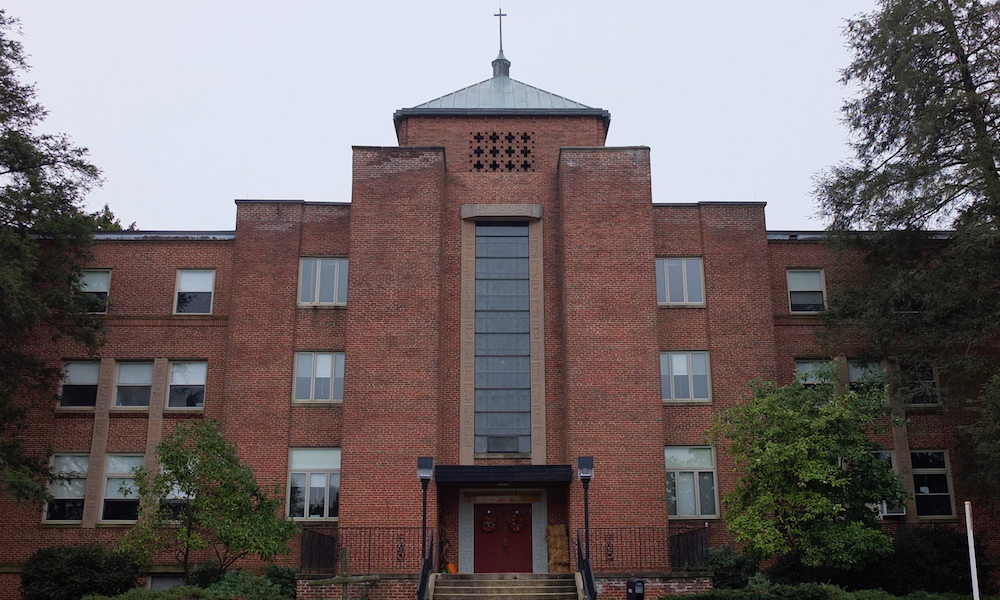
The Convent housing the Adorers of the Blood of Christ in Lancaster, Pennsylvania (Michael Amoruso/Believe.Earth)
According to the nuns’ lawyer, J. Dwight Yoder, the permit violates the Religious Freedom Restoration Act, which says that if the American government infringes upon citizens’ religion, it must do so only for a very good reason. “The nuns feel very strongly that their religious beliefs call them to protect the land they have and they feel like fossil fuels are leading to global warming, which is harming the Earth,” said Yoder. In September, a federal judge dismissed the case, ruling that he lacked jurisdiction to stop the pipeline, but the nuns are appealing the case.
A CHAPEL IN THE WAY OF THE GAS PIPELINE
The fight to prevent the construction of the gas pipeline is restricted neither to the legal realm nor to the nuns. In July, the sisters built an open-air chapel on the part of their land that the Williams company craves. According to the Adorers’ lawyer, the company tried to prevent the construction of the chapel by using a court injunction to take immediate possession of the land, but Williams lost that action. From then on, the chapel became a meeting point and a symbol of the growing resistance movement of locals who, along with the nuns, are trying to stop the installation of the pipeline.
“[The Adorers] were against the gas pipeline from the start, but they did not know what to do about it,” says Malinda Harnish Clatterbuck, an educator and founder of Lancaster Against Pipelines (LAP), the group organizing resistance to the energy project. “When we started contacting all the locals who lived on the construction route, we developed a relationship with them.”
- Mark Clatterbuck, professor of religious studies and one of the founders of Lancaster Against Pipelines, speaks at a vigil in the chapel (Michael Amoruso/Believe.Earth)
- The couple Mark Clatterbuck (left) and Malinda Harnish Clatterbuck are the founders of the group fighting to stop the construction of the gas pipeline in Lancaster (Michael Amoruso/Believe.Earth)
- The Methodist minister Christine Elliot traveled from Massachusetts to Pennsylvania to participate in an action against the pipeline (Michael Amoruso/Believe.Earth)
- A couple dancing at one of the vigils in the open chapel (Michael Amoruso/Believe.Earth)
According to Malinda Clatterbuck, despite their religious differences, the residents and the nuns realized that they shared the same values when it came to the preservation of natural resources. “I’m a Mennonite minister and my husband is a professor of religious studies, and we value and respect what they do,” she says of the nuns. “It was an immediate understanding of the need to preserve this land and our religious rights.”
The chapel became a symbol of coexistence and unity. Together, every week, the nuns and the community hold a vigil: a one-hour gathering in which the group reads passages from books and sings songs composed by the locals, most with lyrics mentioning the gas pipeline and Williams.
“This place is sacred because we come here every week, two or three times a week, to give reverence to the land, to give reverence to God,” says Sister George Ann. “We invite everyone, regardless of faith or religion, and ask them to pray for the soil. We have had the Jewish community, the Mennonites, the Protestants, the Catholics, the Methodists here with us. We come together, because we are a community: We are a unity.”
The Methodist minister Christine Elliot has taken part in this communion. In October, she travelled from Massachusetts just to be part of a protest against the gas pipeline in the chapel. “Reading about the chapel in the cornfield was something that I felt called to be part of even though I live some distance away. I have the same convictions as the sisters and LAP about creation being sacred and this [the construction of the gas pipeline] being dangerous.” For her, the fact that many religions unite in the chapel is “something wonderful”, she says. “It’s a spiritually-based action that unites people, and that’s what we need.”
For retired professor Robert Luwing, a Quaker, joining the movement was like becoming part of a mission. A resident of Lancaster since 1967, Robert was taking pictures of the construction of gas pipelines elsewhere in the state when he heard about the Williams company’s plans for his city. “I never thought I would live to see the day when the gas pipelines would affect us here in Lancaster,” he says. Although he does not own land affected by the project, he joined the movement because he has seen the consequences of the construction in other areas, and also because he thought it was the right thing to do. “It was just a matter of being at peace,” he says. “I feel that there is a sense of mission and I responded to that.”
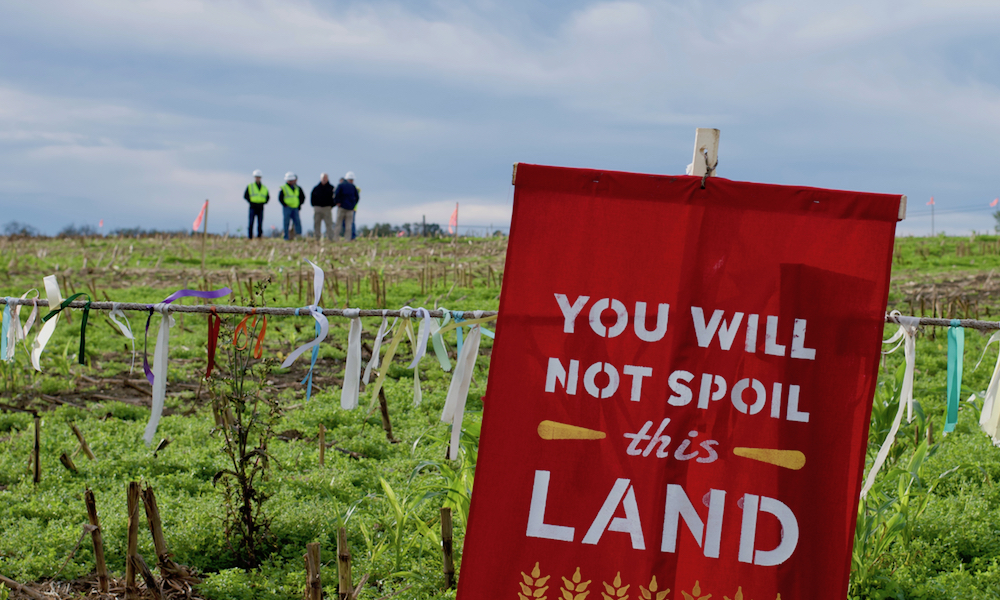
A banner planted at the site where Williams employees, in the background, prepare to build the gas pipeline (Michael Amoruso/Believe.Earth)
A HIGH-RISK BUSINESS
As soon as they learned about the project, residents began to investigate the consequences of having a gas pipeline running through their yards and found that the damage would far greater than they had estimated. According to LAP, the area at risk from a structure one meter in diameter, such as the one Williams is planning, is the surrounding 340 meters. If there is an explosion from a flammable gas leak, an area equivalent to about three football fields on each side of the gas pipeline could be incinerated.
According to the US Department of Transportation, over the past 20 years, the country has recorded 5,684 incidents classified as significant — injuries, deaths, leaks or material damages over US $50,000 dollars — involving gas pipelines. On average, there have been 284 such “significant” incidents per year. The American news organization ProPublica has reported 536 deaths, more than 2,000 injuries and losses of nearly US $7 billion dollars involving gas pipelines between 1986 and 2012.
“We’ve tried to prevent the construction by all the systems that people have recommended us,” says the LAP’s Malinda Harnish Clatterbuck. “We spoke with the legal representatives, who told us that it is a federal matter; we went to federal politicians, who affirmed that they could do nothing because it was a regulatory issue; we are looking to the Federal Energy Regulatory Commission, which approves such projects.” Clatterbuck says residents wrote 6,000 letters to the commission explaining why they did not want the gas pipeline on their land, but nothing happened.
- Demonstrator reads the Bible during an action against the pipeline construction in Lancaster on October 16 (Michael Amoruso/Believe.Earth)
- Demonstrator holds a banner that says, “You will not sell our heritage” in a protest against the the pipeline. (Michael Amoruso/Believe.Earth)
- Demonstrators of different ages participate in civil disobedience to try to prevent the construction of the pipeline (Michael Amoruso/Believe.Earth)
- Demonstrators engage in civil disobedience to try to prevent the construction of the gas pipeline (Michael Amoruso/Believe.Earth)
One of the pipeline opponents’ main arguments is that, although the project has been framed as a public good, giving Williams the legal right to expropriate properties, the company aims to transport gas for export. It will not, opponents argue, bring any direct energy benefit to the citizens of Pennsylvania or the US. The company’s press office confirms that some of the gas will be exported, and while denying that 100 percent of it will be, says the company cannot estimate the quantity of product to be sold abroad. Williams also states that it has obtained all permits and licenses to begin the work and will return the land to the residents under the same conditions in which it was delivered.
Although the number of local landowners who have struck a deal with the company has increased significantly, many are still resisting. On October 21, after a judge determined that the company could begin digging on the nuns’ lands while the lawsuit was still pending, a group of about 100 people gathered in the chapel to protest. So far, 29 demonstrators have been detained during nonviolent protests aimed at preventing the beginning of the construction. Malinda was one of them.
Published on 11/13/2017“I feel I have taught my children to stand up for what you believe in, regardless of what people think or what kind of push back you get. Having convictions and living by those convictions is really important,” she says. I hope that I have empowered them to be bold and courageous in the face of confrontation and to not back away.”
